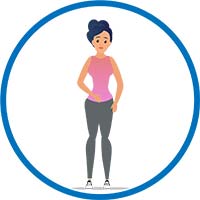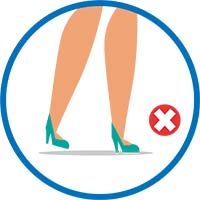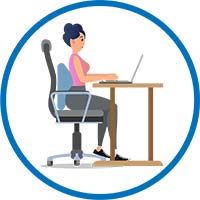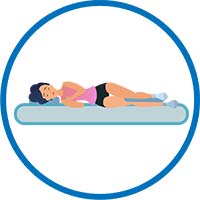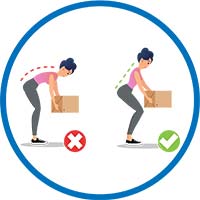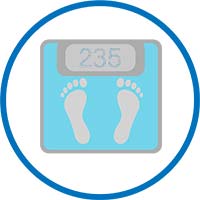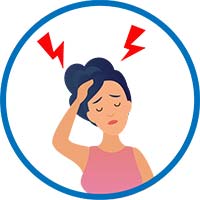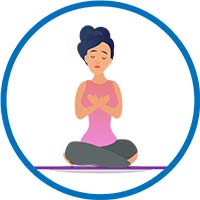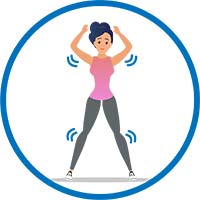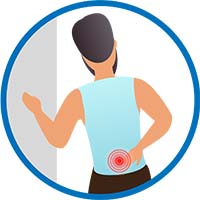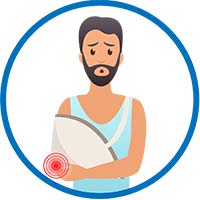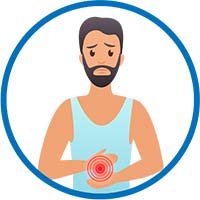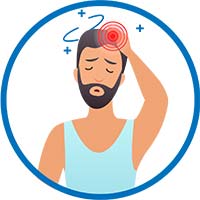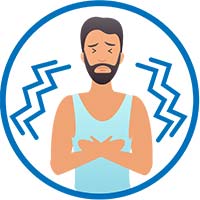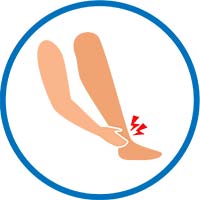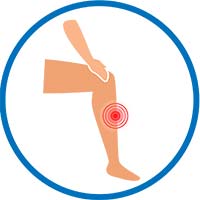Pulmonary Rehabilitation
Breathing comes naturally for most people, but those with chronic lung disease may struggle with every breath. Chronic obstructive pulmonary diseases such as asthma, chronic bronchitis or emphysema affect more than 12 million Americans and are the fourth leading cause of death in the United States. Treatment for the condition often includes pulmonary rehabilitation to help patients control symptoms and improve their quality of life. A pulmonary rehab program also may benefit patients needing lung transplants or other lung surgeries and those suffering from other lung conditions, including cystic fibrosis, bronchiectasis, abnormalities of the thoracic cage and neuromuscular disorders.
Pulmonary rehab usually lasts eight to 12 weeks. It may involve several components, including exercise training, psychosocial support, educational programs and nutrition counseling. Pulmonary rehab is a team effort in which patients may work with physicians, nurses, respiratory, physical and occupational therapists, psychologists, exercise specialists and dietitians. The primary goals of a pulmonary rehab program are to help patients feel more comfortable so they can better handle day-to-day activities and maintain their independence. As an additional benefit, pulmonary rehab also may reduce the need for hospital visits.
Pulmonary Exercise
The exercise portion of the program is designed to improve heart and lung function and strengthen muscles involved in breathing. Lower body training, such as walking or riding a stationary bicycle, can help increase muscle tone and flexibility so it is easier for patients to move around. Upper body training can help strengthen the arm and shoulder muscles that support the ribcage to allow for easier breathing. These exercises also help patients manage daily activities, such as making a bed, carrying groceries or combing hair. Ventilatory muscle training may be recommended for some patients who have weak respiratory muscles that cause breathing problems and impede exercise.
Psychosocial Support
Psychosocial support helps patients deal with emotional stress that may be associated with chronic lung disease. Some patients could become depressed or anxious about their health and have growing concerns about body image, loneliness, low self-esteem, lack of social support or relationships with others. Patients may be taught relaxation skills or encouraged to talk about their feelings to help deal with these issues.
Pulmonary Educational Programs
Educational programs for pulmonary rehab can cover a variety of topics. Information may range from breathing retraining and strategies for managing breathing problems, to how the lungs work and how to travel with lung disease. Patients can learn through one-on-one instruction, group classes, written materials or audio/visual aides. Educational sessions and counseling also may be available to help patients stop smoking.
Nutrition
Information about nutrition is typically given to pulmonary rehab patients because fatigue, difficulty swallowing or poor appetite could hinder their ability to follow a balanced diet. Nutritional counseling also helps with weight management and teaches patients how to prepare and time meals so they do not experience increased shortness of breath. For more information about pulmonary rehabilitation and how it can benefit you, talk with your doctor or call 561-637-5318 for a free referral to a physician near you.

